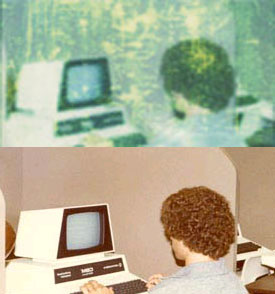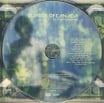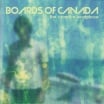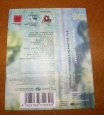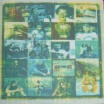Difference between revisions of "The Campfire Headphase"
m (spelling) |
m (Changed "17th October 2005" in opening paragraph to "October of 2005" to reflect the multiple release dates) |
||
| (39 intermediate revisions by 12 users not shown) | |||
| Line 1: | Line 1: | ||
| + | __TOC__ | ||
| + | |||
{{Infobox Release| | {{Infobox Release| | ||
| + | | cover=The Campfire Headphase album cover.jpg | ||
| name=The Campfire Headphase | | name=The Campfire Headphase | ||
| image=thecampfireheadphase.jpg | | image=thecampfireheadphase.jpg | ||
| − | | release_date= | + | | release_date=12th October 2005 (Japan)<br>17th October 2005 (Europe)<br>18th October 2005 (USA)<ref> https://web.archive.org/web/20050717021647/http://www.music70.com:80/boc_discog.html </ref> |
| format=gatefold 2xlp<br>cd (jewel case)<br>cd (digipak) | | format=gatefold 2xlp<br>cd (jewel case)<br>cd (digipak) | ||
| label=warp | | label=warp | ||
| Line 9: | Line 12: | ||
}} | }} | ||
| − | http:// | + | [[The Campfire Headphase]] is the third studio album by [[Boards of Canada]], which was released in October of 2005 via [[Warp Records]]. The album marked a departure from [[Geogaddi]]'s dark, claustrophobic atmosphere to a lighter, more organic tone, with guitars taking a much more prominent role than in the band's previous works. |
| + | |||
| + | == Recording == | ||
| + | Work on [[Boards of Canada]]'s third album began in 2002, with [[Mike]] and [[Marcus]] creating demos for tracks such as "[['84 Pontiac Dream]]" in early 2003.<ref> https://bocpages.org/wiki/Emotional_Abuse </ref><ref> https://bocpages.org/wiki/Music_of_Struggle </ref>. The band intentionally took a more relaxed approach to recording their third album compared to their previous album ''[[Geogaddi]]'', aiming to "switch everything off at six o'clock", as opposed to the "hellish" approach of working "until 4am every day" like they did on ''[[Geogaddi]]''.<ref> https://bocpages.org/wiki/Two_for_the_No-Show </ref> Over the course of approximately a year the band continued to work on new music, and in February 2004 they had a completed album. Following this album's completion, [[Boards of Canada]] undertook a new project of moving their studio.<ref> https://bocpages.org/wiki/La_Part_du_Feu </ref> | ||
| + | |||
| + | By the time the studio move was complete, [[Boards of Canada]] had become dissatisfied with the album they had recorded, and decided to scrap it and start over with a new approach. This new approach was to create an album with a "simpler, more positive" tone and prominent guitars, described by the band as "like the acoustic counterpart of ''[[Music Has The Right To Children]]''". The band continued to work on this new album until mid-2005, with the last track to be started being "[[Slow This Bird Down]]", which originated in June of 2005<ref> https://bocpages.org/wiki/Music_of_Struggle </ref>. [[The Campfire Headphase]] was completed around July of 2005. | ||
| + | |||
| + | == Release and Reception == | ||
| + | The first official word on [[Boards of Canada]]'s third album appeared in [[Warp Records]]' newsletter for July 2005, revealing that the album was finished and mastered, and would be released in October.<ref> https://www.twoism.org/forum/viewtopic.php?f=2&t=90&p=724#p724 </ref> Around the same time, [[music70.com]] revealed the album's title to be [[The Campfire Headphase]], and also revealed the exact release dates for the album.<ref> https://web.archive.org/web/20050717021647/http://www.music70.com:80/boc_discog.html </ref> | ||
| + | |||
| + | The first interview by the band to promote [[The Campfire Headphase]], "[[The Downtempo Duo]]" by [[Wikipedia:Pitchfork_(website)|Pitchfork]], was published on September 26th, 2005. It was in this interview that [[Mike]] and [[Marcus]] first revealed themselves to be brothers. More interviews with various publications followed in October, and interviews with the band regarding [[The Campfire Headphase]] continued to be published until early-2006. | ||
| + | |||
| + | [[The Campfire Headphase]] was first released in Japan on October 12th, 2005, and was released in Europe and the US on the 17th and 18th of October, respectively. The album was generally received positively, but divided fans and critics, with some being disappointed with the change in direction away from the band's electronic sound to a more acoustic one. | ||
| − | + | == Themes == | |
| − | |||
| − | == | + | == Tracklist == |
# "[[Into the Rainbow Vein]]" – 0:44 ([http://www.bleep.com/player/?/WARP123/33198/midi/D3F9D3/575757/00D126 Bleep preview]) | # "[[Into the Rainbow Vein]]" – 0:44 ([http://www.bleep.com/player/?/WARP123/33198/midi/D3F9D3/575757/00D126 Bleep preview]) | ||
| Line 33: | Line 47: | ||
# "[[Macquarie Ridge]]" – 4:57 (Japanese release only) | # "[[Macquarie Ridge]]" – 4:57 (Japanese release only) | ||
| − | === | + | == Artwork == |
| − | + | [[Image:TCH yearbook comparison.jpg|thumb|right|''TCH'' inset image (top), IIT yearbook photo (bottom)]] | |
| − | + | The liner notes include a grid-like collage of apparently seventies-era photos, degraded in a manner similar to the cover. The source of a few of these images have been discovered: | |
| − | |||
| − | |||
| − | |||
| − | |||
| − | |||
| − | |||
| − | |||
| − | |||
| − | |||
| − | |||
| − | |||
| − | |||
| − | |||
| − | |||
| − | |||
| − | |||
| − | |||
| − | |||
| − | |||
| − | |||
| − | |||
| − | |||
| − | |||
| − | |||
| − | |||
| − | : | + | * A photo of a curly-haired man sitting at an [[wikipedia:Commodore International|Commodore]] CBM 2001 computer was taken from a 1979 yearbook photo from the [[wikipedia:Illinois Institute of Technology|Illinois Institute of Technology]]. [http://forum.watmm.com/index.php?showtopic=8386] [http://web.archive.org/web/20070228221147/http://www.iit.edu/alumni/updates/yearbook/1970s/images/campus%20and%20student%20in%20computer%20center%201979.jpg] |
| + | * A photo of blonde-haired woman in profile was taken from a 1972 anti-drug propaganda film called ''[http://www.archive.org/details/social_seminar_tom Social Seminar: Tom]''. A sample of dialogue from the film was also used towards the end of the album track "[[Chromakey Dreamcoat]]". | ||
| + | == Comments and Trivia== | ||
| − | + | *When asked if the record (and especially its artwork) was a throw back to Music Has the Right to Children, Marcus replied that "it's deliberately reminiscent of ‘Music Has the Right to Children'. Musically it's like an echo of that record, all bleached-out blue skies and so on. In some ways it sounds older than ‘Music Has the Right…' because of the choice of instruments and the sheer amount of damage we've done to the sound." | |
| − | + | *The bottom left corner of the front cover (and onto the spine of the digipak) has a smudge that strongly resembles the hexagonal Geogaddi cover. The front and back covers are repeated in the smaller pictures inside the digipak. The smaller pictures are less distorted than the covers. | |
| + | *On the vinyl release, a bird's chirp can be heard in the runout grooves, typically sides C and D. | ||
| − | + | *Playing the vinyl release at 45rpm evokes a completely different listening experience. | |
| − | + | *When inverting the colors on the back cover art, the child's expression changes into a ghostly, almost horrified, stare. | |
| − | |||
| − | |||
| − | |||
| − | |||
| − | |||
| − | |||
| − | |||
| − | |||
| − | |||
| − | |||
| − | |||
| − | |||
| − | |||
| − | |||
| − | |||
| − | |||
| − | |||
| − | |||
| − | |||
| − | |||
| − | |||
| − | |||
| − | |||
| − | |||
| − | |||
| − | |||
| − | |||
| − | |||
| − | |||
| − | |||
| − | |||
| − | |||
| − | |||
| − | |||
| − | |||
| − | |||
| − | |||
| − | |||
| − | |||
=== Reviews === | === Reviews === | ||
| Line 127: | Line 80: | ||
* ''[http://www.warprecords.com/mart/music/release.php?cat=WARP123 The Campfire Headphase]'' at WarpMart | * ''[http://www.warprecords.com/mart/music/release.php?cat=WARP123 The Campfire Headphase]'' at WarpMart | ||
* ''[http://bleep.com/?bleep=WARP123 The Campfire Headphase]'' at Bleep.com | * ''[http://bleep.com/?bleep=WARP123 The Campfire Headphase]'' at Bleep.com | ||
| + | |||
| + | == Artwork == | ||
| + | <DynamicPageList> | ||
| + | category = The Campfire Headphase artwork | ||
| + | namespace=file | ||
| + | ordermethod = created | ||
| + | imagewidth=104 | ||
| + | galleryshowfilesize=yes | ||
| + | galleryshowfilename=yes | ||
| + | imagesperrow=6 | ||
| + | mode=gallery | ||
| + | </DynamicPageList> | ||
[[Category: The Campfire Headphase]] | [[Category: The Campfire Headphase]] | ||
{{Nav-Releases}} | {{Nav-Releases}} | ||
Latest revision as of 20:12, 17 July 2025
Contents
| The Campfire Headphase | |
|---|---|
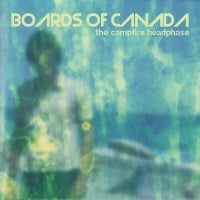
| |
| Label(s) | warp |
| Catalogue No(s) | warplp123 warpcd123 |
| Release date(s) | 12th October 2005 (Japan) 17th October 2005 (Europe) 18th October 2005 (USA)[1] |
| Format(s) | gatefold 2xlp cd (jewel case) cd (digipak) |
| Running time(s) | 62:05 (standard) 67:02 (japanese) |
The Campfire Headphase is the third studio album by Boards of Canada, which was released in October of 2005 via Warp Records. The album marked a departure from Geogaddi's dark, claustrophobic atmosphere to a lighter, more organic tone, with guitars taking a much more prominent role than in the band's previous works.
Recording[edit]
Work on Boards of Canada's third album began in 2002, with Mike and Marcus creating demos for tracks such as "'84 Pontiac Dream" in early 2003.[2][3]. The band intentionally took a more relaxed approach to recording their third album compared to their previous album Geogaddi, aiming to "switch everything off at six o'clock", as opposed to the "hellish" approach of working "until 4am every day" like they did on Geogaddi.[4] Over the course of approximately a year the band continued to work on new music, and in February 2004 they had a completed album. Following this album's completion, Boards of Canada undertook a new project of moving their studio.[5]
By the time the studio move was complete, Boards of Canada had become dissatisfied with the album they had recorded, and decided to scrap it and start over with a new approach. This new approach was to create an album with a "simpler, more positive" tone and prominent guitars, described by the band as "like the acoustic counterpart of Music Has The Right To Children". The band continued to work on this new album until mid-2005, with the last track to be started being "Slow This Bird Down", which originated in June of 2005[6]. The Campfire Headphase was completed around July of 2005.
Release and Reception[edit]
The first official word on Boards of Canada's third album appeared in Warp Records' newsletter for July 2005, revealing that the album was finished and mastered, and would be released in October.[7] Around the same time, music70.com revealed the album's title to be The Campfire Headphase, and also revealed the exact release dates for the album.[8]
The first interview by the band to promote The Campfire Headphase, "The Downtempo Duo" by Pitchfork, was published on September 26th, 2005. It was in this interview that Mike and Marcus first revealed themselves to be brothers. More interviews with various publications followed in October, and interviews with the band regarding The Campfire Headphase continued to be published until early-2006.
The Campfire Headphase was first released in Japan on October 12th, 2005, and was released in Europe and the US on the 17th and 18th of October, respectively. The album was generally received positively, but divided fans and critics, with some being disappointed with the change in direction away from the band's electronic sound to a more acoustic one.
Themes[edit]
Tracklist[edit]
- "Into the Rainbow Vein" – 0:44 (Bleep preview)
- "Chromakey Dreamcoat" – 5:47
- "Satellite Anthem Icarus" – 6:04
- "Peacock Tail" – 5:24
- "Dayvan Cowboy" – 5:00
- "A Moment of Clarity" – 0:51
- "'84 Pontiac Dream" – 3:49
- "Sherbet Head" – 2:41
- "Oscar See through Red Eye" – 5:08
- "Ataronchronon" – 1:14
- "Hey Saturday Sun" – 4:56
- "Constants Are Changing" – 1:42
- "Slow This Bird Down" – 6:09
- "Tears from the Compound Eye" – 4:03
- "Farewell Fire" – 8:26
- "Macquarie Ridge" – 4:57 (Japanese release only)
Artwork[edit]
The liner notes include a grid-like collage of apparently seventies-era photos, degraded in a manner similar to the cover. The source of a few of these images have been discovered:
- A photo of a curly-haired man sitting at an Commodore CBM 2001 computer was taken from a 1979 yearbook photo from the Illinois Institute of Technology. [1] [2]
- A photo of blonde-haired woman in profile was taken from a 1972 anti-drug propaganda film called Social Seminar: Tom. A sample of dialogue from the film was also used towards the end of the album track "Chromakey Dreamcoat".
Comments and Trivia[edit]
- When asked if the record (and especially its artwork) was a throw back to Music Has the Right to Children, Marcus replied that "it's deliberately reminiscent of ‘Music Has the Right to Children'. Musically it's like an echo of that record, all bleached-out blue skies and so on. In some ways it sounds older than ‘Music Has the Right…' because of the choice of instruments and the sheer amount of damage we've done to the sound."
- The bottom left corner of the front cover (and onto the spine of the digipak) has a smudge that strongly resembles the hexagonal Geogaddi cover. The front and back covers are repeated in the smaller pictures inside the digipak. The smaller pictures are less distorted than the covers.
- On the vinyl release, a bird's chirp can be heard in the runout grooves, typically sides C and D.
- Playing the vinyl release at 45rpm evokes a completely different listening experience.
- When inverting the colors on the back cover art, the child's expression changes into a ghostly, almost horrified, stare.
Reviews[edit]
- CD Times review by Mark Thompson
- New Noise review by Jim Merrett
- Pitchfork review by Mark Richardson
- Brainwashed review by Matthew Jeanes
- Allmusic review by John Bush
- BBC review by Colin Buttimer
- Texture review
- Igloo Magazine review by Gabriel Weinstock
- The Observer review by Simon Reynolds
External links[edit]
- The Campfire Headphase at WarpMart
- The Campfire Headphase at Bleep.com
Artwork[edit]
WARPCD123-overview-2.jpg 147 KB
WARPCD123-overview-1.jpg 131 KB
WARPCD123-text.jpg 929 KB
WARPCD123-inlay-5.jpeg 73 KB
WARPCD123-inlay-4.jpeg 74 KB
WARPCD123-inlay-3.jpeg 73 KB
WARPCD123-inlay-2.jpeg 73 KB
WARPCD123-tray.jpeg 73 KB
WARPCD123-inlay-1.jpeg 76 KB
WARPCD123-disc.jpeg 86 KB
WARPLP123-vinyl-3.jpeg 131 KB
WARPLP123-vinyl-2.jpeg 127 KB
WARPLP123-vinyl-1.jpeg 132 KB
WARPLP123-side-4.jpeg 98 KB
WARPLP123-side-3.jpeg 109 KB
WARPLP123-side-2.jpeg 112 KB
WARPLP123-side-1.jpeg 105 KB
BRC-139-back.jpeg 40 KB
BRC-139-front.jpeg 33 KB
Boc-tch-promo-poster.jpg 117 KB
Thc-japanese-poster.jpg 43 KB
Thc-japanese.inlay.jpg 53 KB
Thc-japanese.cover.jpg 88 KB
Tch-postcard-02.jpg 293 KB
Tch-postcard-01.jpg 263 KB
- ↑ https://web.archive.org/web/20050717021647/http://www.music70.com:80/boc_discog.html
- ↑ https://bocpages.org/wiki/Emotional_Abuse
- ↑ https://bocpages.org/wiki/Music_of_Struggle
- ↑ https://bocpages.org/wiki/Two_for_the_No-Show
- ↑ https://bocpages.org/wiki/La_Part_du_Feu
- ↑ https://bocpages.org/wiki/Music_of_Struggle
- ↑ https://www.twoism.org/forum/viewtopic.php?f=2&t=90&p=724#p724
- ↑ https://web.archive.org/web/20050717021647/http://www.music70.com:80/boc_discog.html

